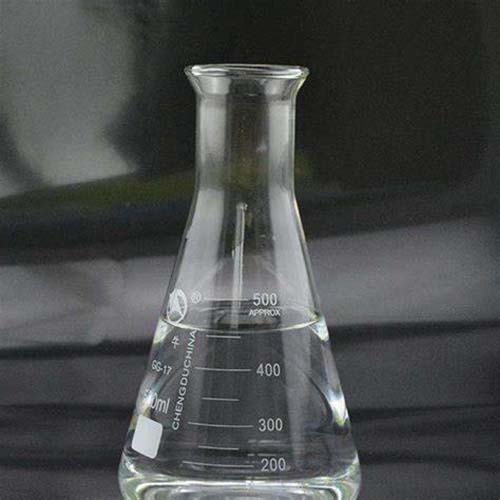2-Hydroxyethyl Acrylate: Applications in Hydrogel and Safety Considerations
General Description
2-Hydroxyethyl Acrylate is a key component in the creation of pH-responsive hydrogels for transdermal drug delivery systems. Its inclusion results in a porous 3D network structure that swells more at higher pH levels, providing controlled release of therapeutic agents like naringenin. The physicochemical properties and mechanical strength of the hydrogel are influenced significantly by 2-Hydroxyethyl Acrylate, ensuring stability and efficient water retention. Safety considerations for storage and handling of 2-Hydroxyethyl Acrylate include preventing polymerization, using appropriate construction materials, and following strict safety precautions due to its potential health hazards.

Figure 1. 2-Hydroxyethyl Acrylate
Applications in Hydrogel
2-Hydroxyethyl Acrylate is a versatile monomer widely used in the creation of hydrogels due to its unique chemical properties. In a study, a pH-responsive hydrogel based on carboxymethyl cellulose and 2-Hydroxyethyl Acrylate was developed for the transdermal delivery of naringenin, a flavonoid with potential therapeutic benefits. The hydrogel was synthesized through radical polymerization, and its structure was confirmed using FT-IR and 1H NMR techniques. The inclusion of 2-Hydroxyethyl Acrylate was crucial in forming a hydrogel with a porous 3D network structure, as evidenced by SEM analysis. Its ability to swell more at higher pH levels (7.5 and 8.5) compared to a lower pH (5.5) highlights the pH-responsive nature of the hydrogel.
Physicochemical Properties and Mechanical Strength
The physicochemical properties of the hydrogel, influenced significantly by 2-Hydroxyethyl Acrylate, were meticulously analyzed. Thermogravimetric analysis was employed to measure water loss, indicating the hydrogel's stability and water retention capacity. The stable gel network was further supported by rheological and texture analyses, which showed that the mechanical properties of the hydrogel were affected by the grafting and crosslinking density of 2-Hydroxyethyl Acrylate. These properties are essential for ensuring the hydrogel's effectiveness as a transdermal delivery system, providing a controlled environment for the release of therapeutic agents.
Applications in Transdermal Delivery
The application of the 2-Hydroxyethyl Acrylate-based hydrogel in transdermal delivery systems offers promising potential. The study demonstrated that the hydrogel enhanced the transdermal delivery of naringenin, with the release behavior following the Fickian diffusion mechanism. This suggests that the hydrogel can effectively control the release rate of the drug, making it suitable for medical applications. The novel pH-responsive hydrogel, cl-CMC-g-pHEA, showcases the significant role of 2-Hydroxyethyl Acrylate in developing advanced delivery systems, particularly for treating conditions like atopic dermatitis, where controlled and efficient drug delivery is crucial. 1
Safety Considerations
Storage Guidelines
2-Hydroxyethyl Acrylate must always be stored under air to prevent polymerization, as the presence of oxygen is crucial for the stabilizer to function effectively. 2-Hydroxyethyl Acrylate should include a stabilizer and be stored at temperatures not exceeding 35 °C. Under these conditions, HEA can remain stable for up to one year from delivery. To avoid over-storage, the "first-in-first-out" principle should be strictly followed. For storage periods exceeding four weeks, it is advisable to replenish the dissolved oxygen content to maintain stability and prevent unwanted reactions.
Handling and Material Considerations
Over time, the content of Ethylene Glycol Diacrylate in 2-Hydroxyethyl Acrylate can gradually increase. If this trace component is relevant to your process, it is recommended to use the material within six months of receipt. Stainless steel and carbon steel are the preferred construction materials for tanks and pipes used to store 2-Hydroxyethyl Acrylate. However, carbon steel may cause rust formation, potentially affecting product quality, as Iron (III) ions from rust can initiate weak polymerization. Special procedures are required to prepare carbon steel tanks for use, and all storage tanks, pumps, and pipes should be earthed to ensure safety and prevent static discharge.
Safety Precautions
2-Hydroxyethyl Acrylate can cause allergic contact dermatitis and severe burns on short contact, highlighting the need for strict safety measures. Acute inhalation of higher concentrations can lead to significant respiratory irritation, including salivation, conjunctival irritation, and pulmonary irritation or edema. It is essential to consult the comprehensive Safety Data Sheet (SDS) for 2-Hydroxyethyl Acrylate, which provides up-to-date safety information. Proper handling, storage, and personal protective equipment (PPE) are crucial to minimize risks associated with 2-Hydroxyethyl Acrylate, ensuring a safe working environment. 2
References:
[1] SO HYUN PARK S N P Hyuk Soo Shin. A novel pH-responsive hydrogel based on carboxymethyl cellulose/2-hydroxyethyl acrylate for transdermal delivery of naringenin[J]. Carbohydrate Polymers, 2018, 200: 1-642. DOI:10.1016/j.carbpol.2018.08.011.Related articles And Qustion
Lastest Price from 2-Hydroxyethyl acrylate manufacturers

US $2.00-6.00/KG2025-07-28
- CAS:
- 818-61-1
- Min. Order:
- 1KG
- Purity:
- 99%
- Supply Ability:
- g-kg-ton

US $1.00/kg2025-04-21
- CAS:
- 818-61-1
- Min. Order:
- 1kg
- Purity:
- 99%
- Supply Ability:
- 10 mt



